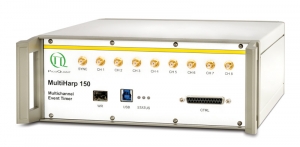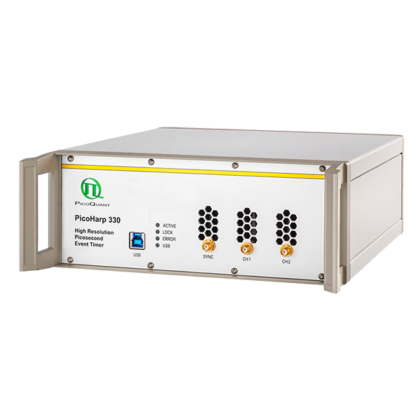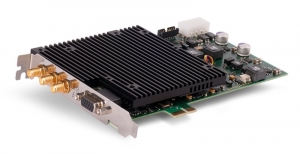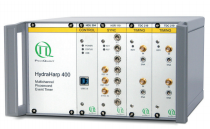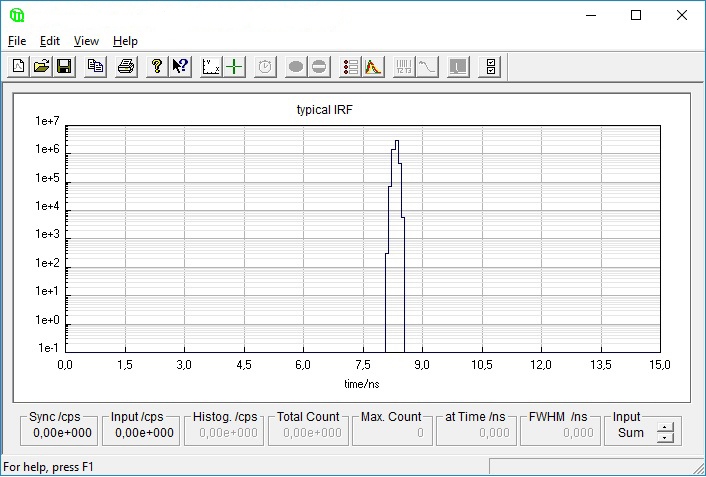The MultiHarp 150 is an easy-to-use, plug-and-play multichannel event timer and Time-Correlated Single Photon Counting (TCSPC) device. Its extremely fast signal processing leads to an excellent data throughput via USB 3.0 interface. The MultiHarp 150 is a compact, robust, and reliable device whose high quality is reflected by our unique 5-year limited warranty. A recently published paper by M. Wahl et al. (pre-print on ArXiv) showcases design features as well as benchmark and application results from spectrally resolved, high speed imaging applications.
Multiple input channels, outstanding flexibility
The MultiHarp 150 is available with either 4, 8, or 16 identical detection channels, which are synchronized but independent, and either 5 ps (P) or 80 ps (N) base resolution. Each model features also one common synchronization input. All channels including the sync input can be used as detector inputs, e.g., for coincidence correlation or coincidence counting. The MultiHarp 150 is also ideally suited for performing TCSPC with multiple detectors using forward start-stop operation. Here the common sync channel allows for synchronization with the excitation source.
Ultrashort dead time for high data throughput
The smartly designed timing electronics allows to fully exploit the count rate limits of time-correlated single photon counting, without having to compromise on the time resolution for many modern single photon detectors. The ultra short dead time of 650 ps allows detecting multiple photons per excitation cycle even at the highest repetition rates achievable by modern picosecond pulsed lasers (requires a detector from the PMA Hybrid Series).
Adjustable timing offsets for each input channel
Each input channel has internal adjustable timing offsets with ±100 ns range at 5 ps (P) or 80 ps (N) steps steps. This greatly simplifies the cabling requirements for experimental set-ups, as selecting cable lengths to compensate for signal delays is no longer needed.
Operation as time tagger
The Time-Tagged Time-Resolved (TTTR) modes supported by the MultiHarp 150 record all relevant time and channel routing information of each detected individual photon event. By storing this full data set, it becomes possible to carry out the most comprehensive and sophisticated analysis of photon dynamics after a measurement. A real time data correlator is included to monitor FCS experiments at count rates of up to 1 000 000 counts/sec. Furthermore, the MultiHarp 150 can be synchronized with other hardware such as scanners when operated in TTTR mode.

White Rabbit ready event timer
White Rabbit is a fully deterministic, Ethernet-based timing network which provides sub-nanosecond accuracy and precise synchronization of devices over large distances. Thanks to its White Rabbit interface, the MultiHarp 150 is prepared to be used in networks that are based on this emerging technology.































